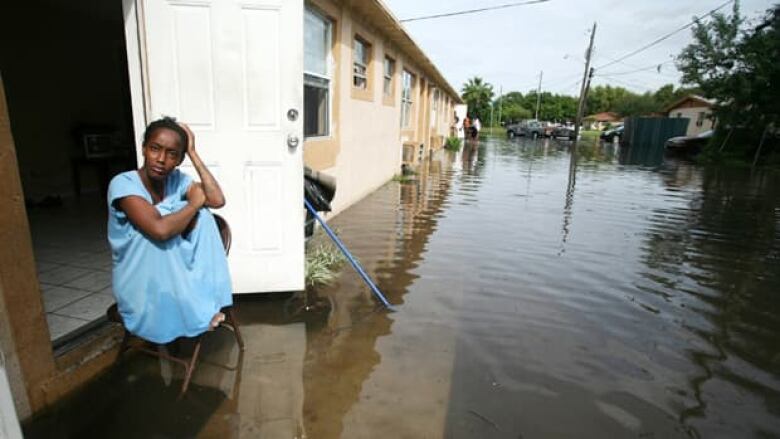Extreme weather takes growing toll

Deaths and damages from extreme weather and climate-related disasters are increasing significantly, but climate change isn't the main culprit, says a new report by the IPCC.
"The trend of losses is rising and rising rather rapidly," said Paul Kovacs, executive director of the Toronto-based Institute for Catastrophic Loss Reduction and a co-author of the report, at a news conference Friday.
However, the main factors behind the mounting losses are socioeconomic, says the 29-page summary report released by the United Nations Intergovernmental Panel on Climate Change aimed at policy-makers.
Is thiscrazy weather caused by climate change?
Francis Zwiers, a University of Victoria statistician who co-authored the new report, said that is a frequently asked question after a major rainfall and flood or other extreme weather event. It remains very difficult to answer for any individual incident, he said.
However, he said, "We probably have not observed to date any extremes that would not have been possiblewithout human influence on the climate."
"There are more people, we have more things," Kovacs said.
"We can't exclude the role of climate change, but it is not the primary driver."
Nevertheless, the summary of the Special Report on Managing the Risks of Extreme Events and Disasters to Advance Climate Change Adaptation recommends adaptation to climate change and disaster risk management as ways to manage the risks of climate extremes and disasters.
The full report will be released in February 2012. It is being drafted in response to the IPCC's 2007 findings that increased heat waves and heavy precipitation events were very likely and increases in droughts, tropical cyclones, and sea levels were likely as the climate changes.
Extreme weather-related losses varied widely among different regions and over different years, the IPCC reported Friday.
Absolute economic losses were higher in developed countries such as Canada, but deaths and economic losses as a proportion of the GDP are far higher in developing nations.
"This is a big issue around the world, but it is particularly hitting hard in poor countries," Kovacs said, noting that the vast majority of weather-related fatalitiesabout 95 per centtake place in the poorest nations.
While richer nations set aside funds in advance in the form of insurance to prepare for natural disasters, which can be mobilized quickly following the disaster, poorer countries must rely on aid that arrives in a very ad-hoc way, Kovacs said. Nations are currently discussing how to make disaster recovery resources such as insurance available to other parts of the world, he added.
While the growing toll of extreme weather so far may not be primarily climate-driven, the report found that it is likely climate change is driving certain types of extreme weather:
- An overall increase in the number of warm days and a decrease in cold days globally, and an increase in the length and number of heat waves in many regions.
- More heavy precipitation events in some regions, which statistics show are more common than regions where such events have decreased.
Implications for Canada
Xuebin Zhang, an Environment Canada research scientist who also co-authored the report, said that means in Canada:
- The maximum temperature in a given 20-year period will likely increase by two to four degrees by the end of the 21st century.
- An amount of precipitation falling in one day that is so extreme it is currently seen only once in 20 years will likely be seen once every five or 10 years by the end of the 21st century.
Gordon McBean, director of policy studies at the Institute for Catastrophic Loss Reduction and other co-author of the report, said in Canada, infrastructure has been designed by using old weather statistics to predict the level of extreme one-day rainfall, for example, that can be expected once in 100 years.
Now, he said, "we're having them happening obviously much more often than 1 in 100 years."
He said cities need to have a new look at their building codes, land use planning and the design of infrastructure such as sewer systems.
Kovacs agreed: "Municipalities who are able to focus on having infrastructure that is designed for tomorrow's weather, as well as today's weather, are far less likely to have citizens experience losses like basement flooding."












_(720p).jpg)


 OFFICIAL HD MUSIC VIDEO.jpg)
.jpg)



























































































